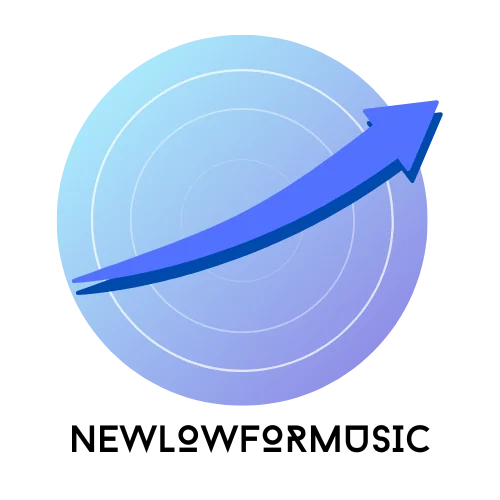Table of Contents
ToggleIn the wild world of economics, understanding leading indicators is like having a crystal ball that actually works. These indicators provide a sneak peek into the future of the economy, helping investors, businesses, and even casual observers make informed decisions. Who wouldn’t want to be the savvy friend at the dinner table who knows whether the economy is headed for a party or a recession?
Overview of US Leading Economic Indicators
US leading economic indicators predict future economic conditions, providing early signals about trends in economic activity. Commonly watched indicators include the stock market performance, unemployment claims, and manufacturing activity. These metrics help stakeholders gauge economic health and make strategic decisions.
The Conference Board’s Leading Economic Index (LEI) consists of ten components. These components include average weekly hours in manufacturing, new orders for consumer goods, and building permits for new housing. Each component offers specific insights into different aspects of the economy.
In addition to the LEI, another prominent indicator is the Purchasing Managers’ Index (PMI). This index measures the economic health of the manufacturing and services sectors. When the PMI exceeds 50, it indicates expansion, while a value below 50 suggests contraction.
Consumer confidence indexes also play a critical role. These surveys assess how optimistic consumers are regarding their financial situation and the overall economy. High consumer confidence often correlates with increased spending, which drives economic growth.
Housing starts are an essential indicator as well. They reflect the number of new residential construction projects, revealing trends in the housing market. Rising housing starts signal growth, while declining numbers can indicate economic slowdowns.
Investors focus on these indicators to inform investment strategies. Understanding these leading indicators allows them to anticipate changes in the economic landscape, whether inflation, recession, or recovery. The ability to interpret these signals enables businesses and individuals to make informed financial decisions and prepare for potential economic shifts.
Key Components of US Leading Economic Indicators

Key components of US leading economic indicators provide vital insights into the economy’s future trajectory. Each component plays a distinct role in forecasting economic activity.
Housing Market Indicators
Housing market indicators reflect trends in real estate activity and consumer confidence. Monthly housing starts measure new construction and signal demand in the housing sector. Rising home sales often predict economic expansion, while declining figures may indicate potential downturns. Existing home sales also serve as a crucial measure of market health. These figures help analysts understand consumer sentiment regarding significant investments.
Stock Market Performance
Stock market performance acts as a barometer for overall economic health. Investors and analysts closely monitor indices like the S&P 500 and Dow Jones Industrial Average for trends. An upward trend in values often signals investor confidence and economic growth. Conversely, market volatility or declines may suggest impending economic challenges. Additionally, trends in initial public offerings (IPOs) provide insights into business optimism and capital market conditions.
Consumer Confidence Index
Consumer confidence index measures households’ optimism regarding the economy. Monthly surveys gauge how confident individuals feel about their financial situations and potential spending. Higher index values indicate stronger consumer spending, fostering economic growth. Conversely, declining confidence can foreshadow reduced spending and slower economic activity. Observing trends in these indexes assists economists in predicting shifts in consumer behavior and overall economic conditions.
Importance of US Leading Economic Indicators
US leading economic indicators provide crucial insights into future economic conditions. Predicting shifts in economic activity enables investors and businesses to make informed decisions. High relevance comes from their role in signaling potential growth or decline periods. Stock market performance, unemployment claims, and manufacturing activity represent key components.
The Conference Board’s Leading Economic Index (LEI) includes ten specific components, revealing different economic aspects. These components highlight assessments like average weekly hours in manufacturing and new consumer goods orders. Each element contributes to a broader understanding of economic trends.
Purchasing Managers’ Index (PMI) examines the manufacturing and services health. Values above 50 indicate expansion, while lower values signify contraction. Additionally, consumer confidence indexes evaluate optimism surrounding individual financial situations and the economy. Falling home sales can hint at underlying issues in the housing market.
Housing starts serve as a predictor for future economic activity. Monthly housing starts reflect real estate developments that correlate with consumer confidence, signaling potential economic growth. When stock markets rise, they often indicate overall economic health, with indices like the S&P 500 and Dow Jones Industrial Average acting as barometers.
Analysts and economists closely monitor these indicators to understand consumer behavior shifts. Robust consumer confidence correlates with increased spending, while declining figures can foreshadow reduced economic activity. Following these indicators allows decision-makers to anticipate changes in economic landscapes effectively.
How to Analyze US Leading Economic Indicators
Analyzing US leading economic indicators involves a detailed examination of various components. Investors and analysts look at historical trends to identify patterns over time. They utilize resources like the Conference Board’s Leading Economic Index to assess indicators’ effectiveness.
Reviewing stock market performance provides insights into overall economic health. The S&P 500 and Dow Jones Industrial Average serve as benchmarks that illustrate market trends. Rising stock values typically suggest investor confidence, signaling potential economic growth.
Monitoring unemployment claims proves essential, as decreasing claims usually indicate strengthening labor markets. A strong job market correlates with increased consumer spending, enhancing prospects for economic expansion. Conversely, rising claims can hint at potential downturns.
Evaluating manufacturing activity also yields valuable information. The Purchasing Managers’ Index reflects sector health; values above 50 indicate expansion, while below 50 suggest contraction. Changes in this index can forecast shifts in production levels and overall economic activity.
Consumer confidence indexes assess public sentiment about personal financial situations and economic conditions. High confidence levels imply a willingness to spend, fostering growth. When confidence declines, caution in spending often follows, impacting economic stability.
Finally, housing market indicators, including housing starts and existing home sales, offer critical insights. Trends in real estate reflect broader economic conditions. Rising home sales typically indicate economic expansion, whereas declines can signal underlying problems.
Utilizing these indicators effectively requires continuous monitoring and analysis. Tracking these metrics allows businesses and investors to anticipate future economic developments, adjusting their strategies accordingly. Staying informed on these components provides a clearer picture of the economic landscape, enabling better decision-making.
Understanding US leading economic indicators is essential for anyone looking to navigate the complexities of the economy. These indicators serve as vital signals that can influence investment strategies and business decisions. By keeping an eye on metrics like stock market performance unemployment claims and consumer confidence indexes individuals and organizations can better anticipate changes in economic conditions.
The insights gained from analyzing these indicators not only empower informed decision-making but also help in adapting to potential economic shifts. As the economic landscape continues to evolve staying updated on these leading indicators remains crucial for achieving financial success and stability.







